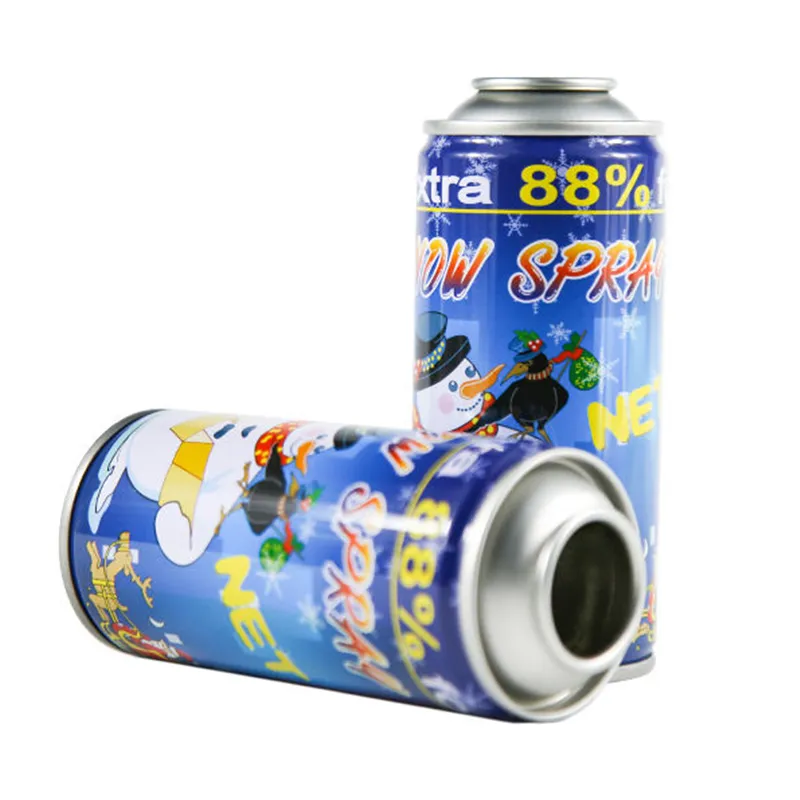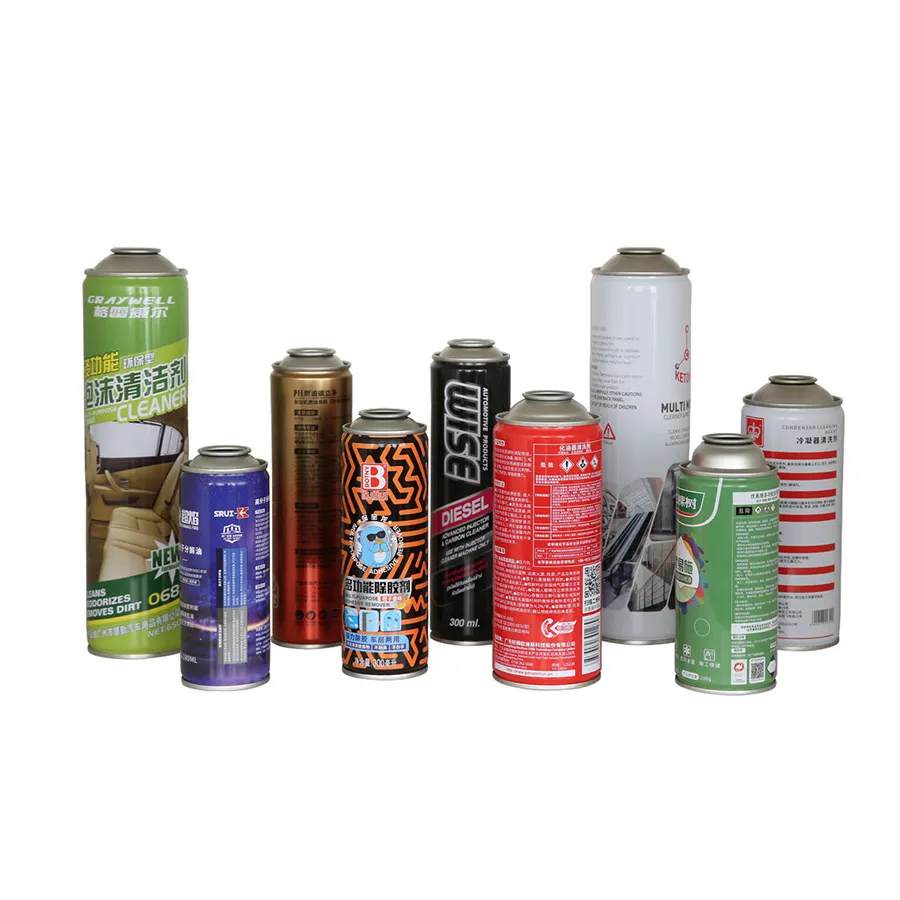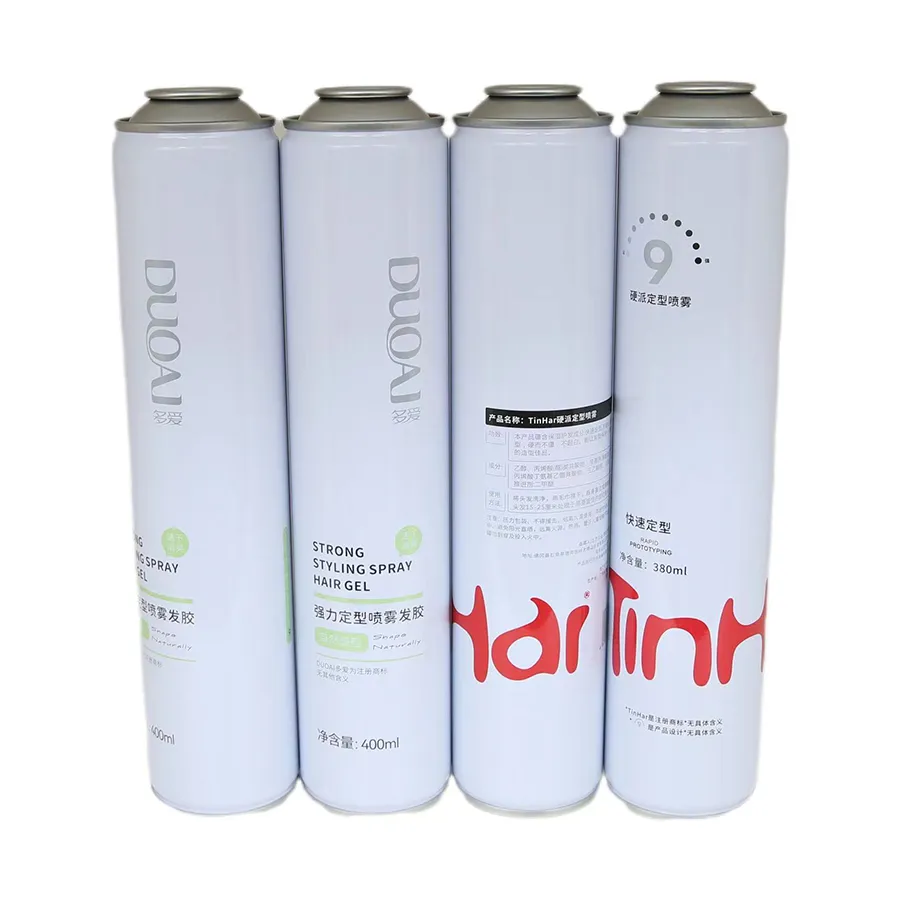From air fresheners, cosmetics to industrial aerosol sprays, aerosol cans can be found everywhere. However, as a special metal packaging material, whether aerosol cans can be recycled after use has always been a topic of concern. This article will analyze aerosol cans from multiple angles, including the material, safety and process of recycling, to provide readers with a comprehensive answer.

What are aerosol cans made of? Can they be recycled?
What materials are aerosol cans mainly made of?
Aerosol cans are usually made of metal materials, the most common of which are aluminum or tinplate (tin-coated steel plate). Aluminum aerosol cans are widely used in daily life because of their light weight and good corrosion resistance; while tinplate aerosol cans have strong structural strength and are suitable for industrial fields that require higher pressure resistance. These metal materials themselves have good recycling and reuse value and are common categories in the recycling system.
Why does the material of aerosol cans determine its recycling value?
Aluminum and tinplate are both recyclable materials. Aluminum can be directly made into new aluminum products after melting, and tinplate can be remelted for other metal products after removing the tin coating. Since metals do not lose their strength and properties after melting and reprocessing, aerosol cans have a high recycling value from a material perspective. In addition, recycling these metals can effectively reduce the mining and refining of new metals, save resources, and reduce the impact on the environment.

How to ensure the safety of aerosol cans recycling?
Why do you need to pay attention to safety issues when recycling aerosol cans?
Aerosol cans are high-pressure containers, which usually contain propellants (such as flammable gases such as propane and butane). Even if the contents are used up, a small amount of gas will still remain in the can. Therefore, special care should be taken during recycling to avoid explosions, combustion and other dangers caused by residual gas. Aerosol cans have high safety when the sealing is intact, but special conditions such as high temperature, puncture, and incineration may still cause the can to rupture or explode. Therefore, ensuring safety is the primary issue faced in the recycling process of aerosol cans.
Why should aerosol cans be emptied before processing?
Before recycling aerosol cans, the residual gas in the can must be completely evacuated. It is generally recommended to completely use up the contents of the aerosol can to ensure that the propellant and other gases are discharged. This can be achieved by fully pressing the nozzle in a well-ventilated environment. Some aerosol cans are also equipped with special evacuation devices to release the residual gas in the can more completely and safely. Evacuating before recycling can greatly reduce the risk of explosion during the handling of aerosol cans.
What is the process for recycling aerosol cans?
The first step in recycling aerosol cans: sorting
The first step in recycling aerosol cans is sorting. Depending on the material of the can, aerosol cans can be divided into two categories: aluminum and tinplate. After sorting, aerosol cans of different materials can be processed separately according to their respective recycling processes to ensure efficient recycling and improved product quality. When sorting, recycling stations usually separate aerosol cans from other metal objects to avoid dangers caused by mishandling.
How are aerosol cans further processed?
The sorted aerosol cans are sent to professional metal recycling agencies for further processing. First, the coating, labels, etc. on the surface of the aerosol cans are cleaned. For tinplate aerosol cans, the tin coating on the surface needs to be removed because the tin coating will affect the subsequent smelting process. The cleaned aerosol cans are sent to a high-temperature furnace for melting. The aluminum or steel material can be melted and remade into new metal materials for the production of other products.

What are the difficulties in recycling aerosol cans?
Why does the inner coating of aerosol cans affect the recycling process?
The inside of aerosol cans is usually coated with a special inner wall coating to prevent the contents of the can from directly contacting the metal and causing corrosion. This coating will have a certain impact on the high-temperature smelting process when recycled, and may produce harmful gases. Therefore, aerosol cans need to be coated before smelting to ensure that the coating does not affect the purity of the metal or cause environmental pollution.
Why is the cleaning process of aerosol cans complicated?
Some contents in aerosol cans, such as paint and chemicals, have strong adhesion, and special cleaning agents and methods are required to clean these contents. To ensure the quality of metal recycling, aerosol cans must be thoroughly cleaned before entering the smelting furnace. This cleaning process often involves a large amount of water resources and chemical cleaning agents, which increases the cost and difficulty of recycling aerosol cans. Therefore, how to efficiently clean the contents of aerosol cans has become one of the problems that must be faced during the recycling process.
What are the environmental benefits of recycling aerosol cans?
How to reduce resource consumption through aerosol cans recycling?
Aerosol cans recycling can effectively reduce the consumption of natural resources, especially the mining and smelting of aluminum and iron ore. The production of new aluminum and steel products usually requires a lot of energy, and recycling aerosol cans can reuse these materials and reduce dependence on original mineral resources. According to statistics, the energy required to recycle aluminum aerosol cans is only about 5% of the energy required to produce new aluminum products, which has a significant driving effect on energy conservation and emission reduction.
Can recycling aerosol cans reduce environmental pollution?
If the chemicals in aerosol cans are discarded at will, they will pollute the soil and water. Recycling aerosol cans can not only reduce the risk of these harmful substances entering the environment, but also reuse metal resources, effectively reducing the pressure of metal waste on the environment. In addition, once the propellants and contents contained in aerosol cans leak into the air, they will also cause damage to the atmosphere. Recycling can avoid these potential environmental risks.

How to properly dispose of discarded aerosol cans?
Why not discard aerosol cans at will?
Due to the special structure of aerosol cans, random discarding may cause safety hazards such as explosion and combustion, especially during the incineration process in the landfill. Therefore, discarded aerosol cans should not be thrown into ordinary trash cans at will, but should be placed in special metal recycling containers or sent to professional waste recycling stations. By handling discarded aerosol cans in a reasonable way, the safety of the environment and others can be guaranteed.
How to judge whether aerosol cans can be discarded?
Before discarding aerosol cans, make sure the cans are completely empty and the propellant gas is completely exhausted in a well-ventilated area. If the aerosol cans have been used up and can no longer eject the contents, they can be sorted and recycled according to the requirements of the recycling agency. In addition, you can also consult your local recycling station to find out if aerosol cans require special handling steps to ensure proper disposal.
Affordable Metal Packaging Solutions for Every Industry
Foshan Dekai Metal Packaging Co., Ltd. provides a broad selection of metal packaging solutions, including aerosol cans, tinplates, and printed metal products. Our automated production lines and advanced technology ensure a high level of precision and efficiency. Whether you need bulk orders, customized packaging, or affordable wholesale prices, we have the right solution for you. Reach out to learn more about our prices and special promotions.

